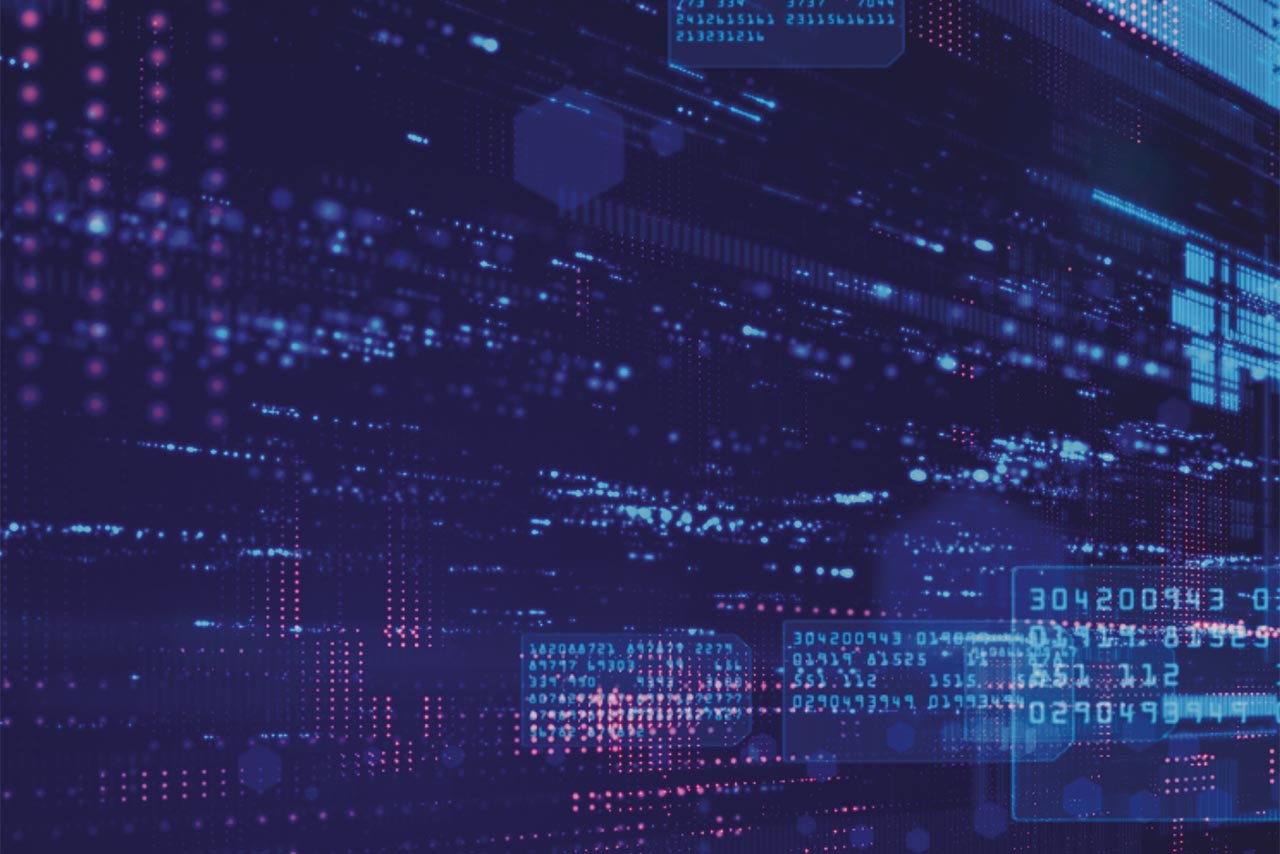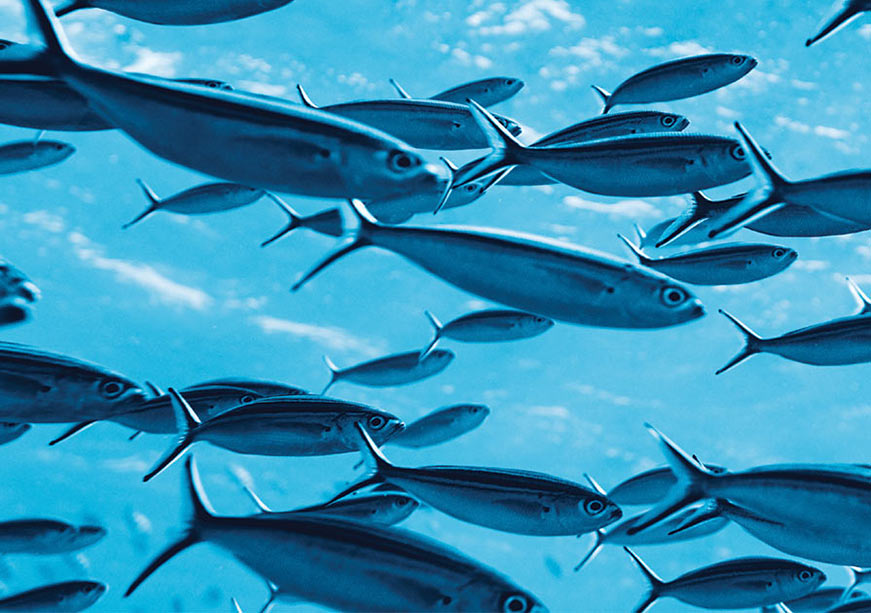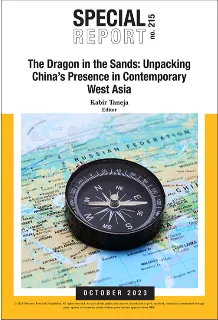Introduction
Deep Tech, characterised by advanced and innovative technologies, is fundamentally reshaping our world, providing nations with unparalleled opportunities to enhance their economic prosperity and pursue distinct development objectives. It encompasses various cutting-edge technologies, including advanced materials, artificial intelligence (AI), quantum computing, computational chemistry, advanced communications, biotechnology, robotics, and big data—technologies based on substantial scientific or engineering innovation.[1] Deep Tech acquires prominence with the intertwining of technology and geopolitics, particularly in the context of the competition for technological supremacy. Beyond it, Deep Tech also has the potential to address complex societal challenges, such as healthcare, climate change, and cybersecurity.
Deep Tech has witnessed a surging interest from venture capital funding. Globally, Deep Tech startups accounted for approximately 20 percent of total venture funding over the past half-decade, up from about 10 percent a decade ago.[2] In India, too, the Deep Tech innovation ecosystem is thriving, giving rise to multiple startups. Currently, the country has over 3600 Deep Tech startups, with over 480 being established in 2023 itself.[3] This report gives an overview of the Deep Tech innovation ecosystems in India and the United Arab Emirates (UAE), and then delves into India’s bilateral and minilateral engagements in this domain. It concludes by outlining potential collaboration opportunities with the UAE, which has emerged as a significant tech actor by fostering investments and innovation.
Figure 1: Venture Capital Funding in Deep Tech
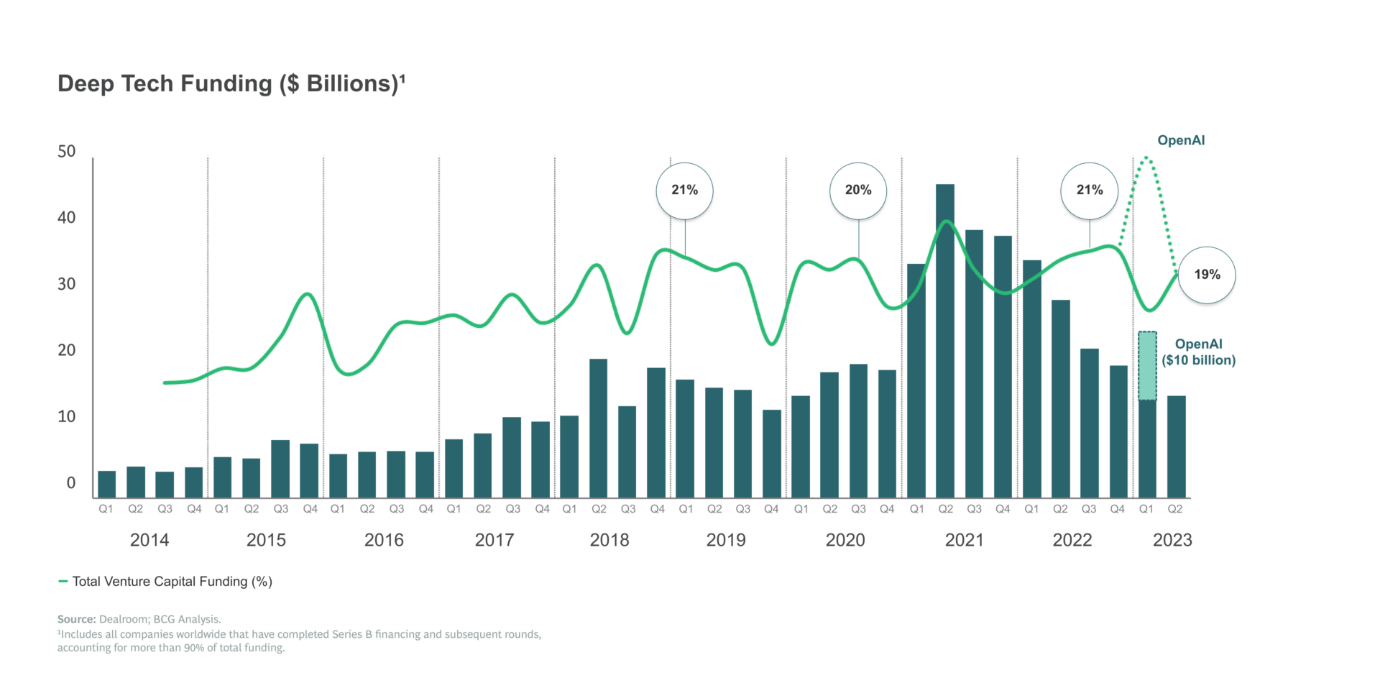
Source: BCG[4]
Understanding Deep Tech Dynamics
While the term ‘Deep Tech’ was coined a while ago, it has only gained a precise definition over the last decade.[5] The Deep Tech innovations are ‘deep’ because they are sophisticated answers to complex challenges. It must be noted that our understanding of what qualifies as Deep Tech continually evolves.[6] As scientific and technological advancements progress, the threshold for what is considered cutting-edge and revolutionary shifts. Deep Tech technologies are based on tangible engineering innovation or scientific advances and discoveries.[7] As noted above, current examples of Deep Tech include AI, quantum computing, biotechnology and genomics, aerospace, advanced materials, robotics, drones, advanced communications like 6G, and green energy, amongst others.[8] These innovations hold the potential to transform industries, generate high-skilled jobs, and expand investments. However, realising this potential requires overcoming complex scientific, engineering and structural challenges.
Figure 2: The Universe of Deep Tech
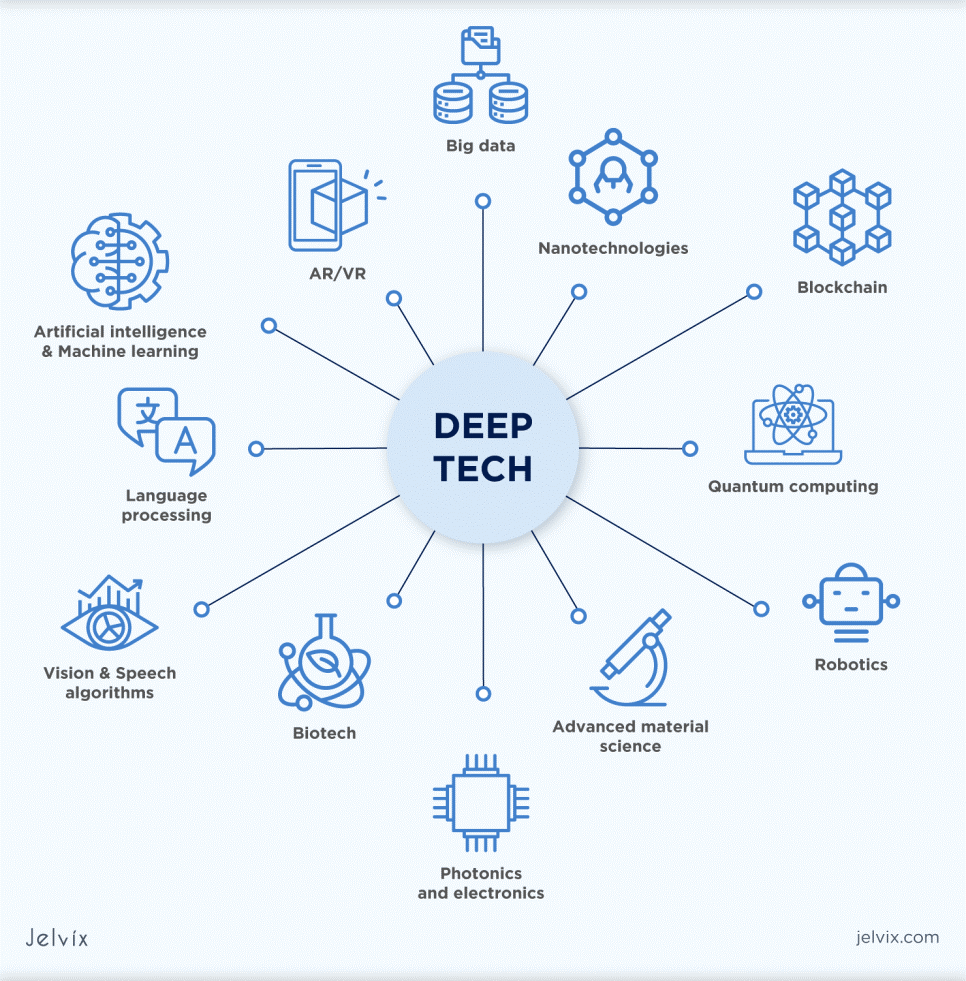
Source: Jelvix[9]
To harness the burgeoning potential of Deep Tech, mapping its trajectory and broader trends, along with strategic planning, is crucial. Maximising its benefits demands a focus on effective regulation, innovation and entrepreneurship, infrastructure development, investments, and human capital and talent cultivation. Moreover, given the importance of developing a robust Deep Tech ecosystem, government-backed investment and international collaborations are key in developing a more favourable investment landscape.
Deep Tech Ecosystems in India and the UAE
Backed by government programmes, academia and private investments, the Deep Tech landscape in India has been gaining momentum, particularly since 2020 when funding in Deep Tech companies peaked to about US$ 4 billion, while the number of deals peaked in 2021 at 337.[10] Deep Tech startups are driving innovation in key sectors like AI, blockchain, drones, cybersecurity, Internet of Things (IoT), big data and robotics. The premier academic institutions in the country are collaborating with industry leaders in fields like AI, robotics, quantum computing, blockchain and extended reality. For instance, the Indian Institute of Technology (IIT) Madras is partnering with the Taylor & Francis Group to advance AI and data science research.[11] IBM is collaborating with 11 top-tier academic institutions, including the Indian Institute of Science Bengaluru and IIT Kharagpur to boost advanced training and research in quantum computing.[12]
The Indian government has taken several steps to promote the adoption of Deep Tech and create a conducive ecosystem for their development. In December 2021, the Ministry of Electronics and Information Technology (MeitY) released the “National Strategy on Blockchain,” which elucidated its vision to adopt blockchain in various sectors like healthcare, agriculture, finance, voting and e-governance while laying the groundwork for establishing a “National Blockchain Framework,” under which it will work towards building a national-level infrastructure for blockchain.[13] NITI Aayog is working on AIRAWAT, an AI-specific Cloud Computing infrastructure, which will focus on Research & Development (R&D) to help businesses and governance use cases.[14] The Department of Science and Technology (DST) has signed a Memorandum of Understanding (MoU) with IBM to establish a quantum computing education & research initiative in India.[15]
Figure 3: Deep Tech Funding in India
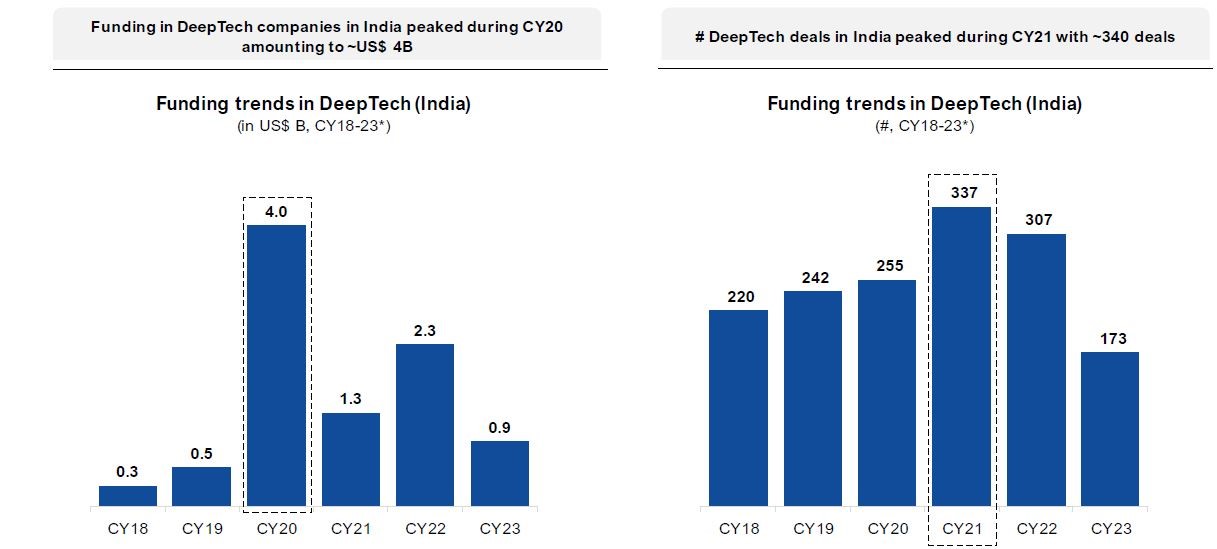
Source: MeitY[16]
The UAE has rapidly emerged as a global hub for innovation and technology. With a bold vision to diversify its economy and reduce its reliance on oil, the country is rapidly advancing in various sectors, including Deep Tech, and has gained recognition for fostering innovation.[17] This dynamic transformation is driven by the UAE’s forward-thinking leadership, strategic investments from local financial institutions, and a conducive business environment. This gives startups linkages and opportunities with regulatory sandboxes and accelerators, yielding market access opportunities.
While economic diversification has been underway in the UAE for well over two decades, 2020 served as a landmark year. Deep Tech became a key economic contributor with the establishment of the Advanced Technology Research Council (ATRC) and later its entities—Technology Innovation Institute, ASPIRE, and VentureOne—working to shape a thriving R&D ecosystem in Abu Dhabi.[18] The shift led to attracting a talent pool of experts from around the world and incubating the country’s exceptional Science, Technology, Engineering, and Mathematics (STEM) talent into thriving R&D careers. From space exploration and quantum technology to directed energy, the UAE has established itself as a testbed for the world’s innovators.
India’s Bilateral Engagements
India’s efforts in developing a vibrant Deep Tech ecosystem have been bolstered by its bilateral engagements with other like-minded nations from around the world. The UAE, having already established itself as a pivotal trade partner for India, particularly after the signing of the Comprehensive Economic Partnership Agreement in 2022, is playing a key role in this engagement.[19] After the launch of the Initiative on Critical and Emerging Technology (iCET) in 2023, the United States (US) has also become an important partner for India in the Deep Tech domain. Likewise, other partners like Japan, Australia, France, and the United Kingdom (UK) are collaborating with India on this ambitious endeavour.
UAE
In 2016, India and the UAE signed an MoU on Technical Cooperation in Cyber Space and Combating Cyber Crime.[20] Both countries are also cooperating in the area of space exploration since an MoU was signed in 2016 between the Indian Space Research Organisation (ISRO) and the United Arab Emirates Space Agency with the stated objective of “exploration and use of outer space for peaceful purposes”. Subsequently, ISRO launched the UAE’s Nayif-1 nanosatellite in 2017.[21]
In 2018, India and the UAE signed an MoU to establish a bilateral AI bridge with the aim of creating US$ 20 billion in economic benefits over the next decade.[22] The MoU focuses on open bilateral engagement through a Joint Working Group comprising both countries. It aims to foster an innovation ecosystem by involving governments, startups, academia and industry associations, while promoting further investment in AI.[23]
At the 11th meeting of the India-UAE High Level Joint Task Force on Investments held in October 2023, both countries signed an MoU that will focus on facilitating industrial investments and technology transfer, and enable the deployment of key technologies in industry through joint industrial and technological cooperation and development.[24] It enlists seven key areas including supply chain resilience, renewable energy, healthcare, space systems, AI, Industry 4.0, and standardisation and metrology.[25] To strengthen supply chain resilience, the UAE and India will identify opportunities for raw material supply and share best practices in industrial enablement and incentive programmes.[26] The two nations will collaborate to advance energy storage technologies, Smart Grid deployment, and renewable energy and energy efficiency R&D in the energy sector.[27]
In the field of healthcare and life sciences, they will collaborate on developing pharmaceuticals, the application of biotechnology, and further research in these areas.[28] The MoU also emphasises the intention to strengthen space industries through commercial development, the launch of small satellites, space exploration, and the licensing of space-related materials.[29] Both countries will work together to deploy AI technologies in various industries, including space, energy, healthcare, and supply chains, while advancing machine learning and data analytics capabilities.[30] Moreover, the agreement emphasises the implementation of Industry 4.0 technologies, real-time data processing, autonomous robotics, and additive manufacturing in key industries.[31] Under this MOU, industrial and academic collaborations, collaborative R&D initiatives, and the exchange of best science and technology policy practices will be encouraged, further solidifying the partnership’s comprehensive nature.[32]
In January 2024, both countries signed an agreement on green hydrogen development and investment, and launched a feasibility study on an undersea cable connecting them as part of India’s “One Sun, One World, One Grid Initiative”.[33]
Prime Minister Modi’s visit to the UAE in February 2024 witnessed the signing of a total of eight MoUs between the two countries, including one between the Ministry of Investment of the UAE and India’s MeitY, setting out a framework for the expansion of bilateral investment cooperation in the digital infrastructure sector, with a special emphasis on data centre projects in India.[34] The MoU marks a significant step towards developing opportunities in digital infrastructure and AI between both nations. This reflects the lead taken by the UAE and India in furthering regional and digital connectivity. Through the MoU, both countries will jointly explore, assess and evaluate the technical and investment potential of developing data centre projects in India with an initial capacity of up to 2 gigawatts.[35] The MoU will also promote and facilitate investments in Digital Public Infrastructure, AI and aspects related to R&D and innovation.[36] Both countries will assess the technical and investment potential of developing an AI computing capacity of eight exaflops for use by the government, public and private sectors, and academia to support the deployment of a supercomputer cluster in India.[37] The agreement focuses on creating strong and effective collaboration by building relationships between public and private organisations in the UAE and India, while also facilitating knowledge exchange.[38]
United States
The Indo-US Science and Technology Forum, established under an agreement between the Indian and US governments in March 2000, is an autonomous bilateral organisation jointly funded by both governments to promote science, technology, engineering and innovation through substantive interaction among government, academia and industry.[39] The DST, Government of India and the US Department of State are the respective nodal agencies to advance this cooperation. Its flagship programmes include the US-India Artificial Intelligence Initiative[40] and the US-India Science & Technology Endowment Fund (USISTEF).[41]
However, in January 2023, both countries established a much more promising mechanism in the iCET.[42] It includes joint efforts to promote the development of emerging and Deep Tech such as AI, semiconductors, telecommunications, quantum technology and communications. In addition, iCET aims to enhance bilateral collaboration on resilient semiconductor supply chains by supporting the development of a semiconductor design, manufacturing and fabrication ecosystem in India.[43] This involves encouraging collaborations for developing robust semiconductor manufacturing infrastructure in India.[44] The US-India Private Sector Task Force is examining opportunities for immediate- and long-term strategies that will conjoin their respective semiconductor ecosystems.[45] Major US semiconductor corporations such as Micron Technology, Lam Research, Applied Materials and Google have announced significant investments in R&D, workforce development and manufacturing in India.[46]
Meanwhile, the India US Joint Task Force on 5G/6G and Open Radio Access network (O-RAN) technologies is attempting to develop standards, promote research collaborations and deployment trials of the next generation communication technologies.[47] For this, the Bharat 6G Alliance from India and Next G Alliance from the US have joined hands to onboard relevant stakeholders from government, private sector, academia, research institutions, and standards development bodies.[48]
Another area of collaboration is quantum technology. Both countries have established the Quantum Entanglement Exchange, as a platform for knowledge sharing between their respective research ecosystems.[49] India’s SN Bose National Centre for Basic Sciences, Kolkata has joined the Quantum Economic Development Consortium, set up under the United States’ National Quantum Initiative Act of 2018. It contributes in developing skilled human resources and standards.[50] Moreover, under the USISTEF, a dedicated grant programme has been established to support co-development and commercialisation of AI and quantum technologies.[51] India’s Centre for Development of Advanced Computing (C-DAC) also participates in the US Accelerated Data Analytics and Computing (ADAC) Institute, that brings together 11 research institutions.[52]
The second meeting of iCET was held in June 2024 in New Delhi, and a joint fact sheet at the end of the meeting charted the initiative’s future.[53] It contained provisions regarding bridging innovation ecosystems, space technology cooperation, defence innovation and industrial cooperation, advanced telecommunications, biotechnology and biomanufacturing, securing semiconductor supply chains, clean energy and critical minerals, AI, quantum computing and High Performance Computing (HPC).[54]
Japan
In July 2023, India and Japan joined hands to develop a resilient semiconductor supply chain and a vibrant tech ecosystem.[55] This partnership includes five areas: “semiconductor design, manufacturing, equipment research, establishing resilience in the semiconductor supply chain, and talent development,” spanning both the public and private sectors.[56] India and Japan intend to share technical knowhow, research, and innovation between the two countries’ ecosystems.[57] Once mature, this collaboration is also expected to include miniaturisation, integration of AI, and quantum technologies.[58]
“India-Japan Digital Partnership”, launched in 2018, expanded cooperation under the IT sector, focusing more on “Digital ICT Technologies”.[59] The first India-Japan Startup Hub in Bengaluru has been set up to identify selected Indian startups for the Japanese market and for potential Japanese investors.[60]
Science & Technology (S&T) Cooperation was formalised through an inter-governmental agreement signed in 1985.[61] Recent initiatives include the establishment of three India-Japan Joint Laboratories in the area of ICT (AI, IoT and Big Data); the initiation of the DST–Japan Society for the Promotion of Science Fellowship Programme for young researchers; and an MoU for the third phase of the Indian Beam Line at KEK (High Energy Accelerator Research Organisation) Tsukuba for advanced materials research.[62]
ISRO and Japan Aerospace Exploration Agency (JAXA) collaborate actively in X-ray astronomy, satellite navigation, lunar exploration and the Asia Pacific Regional Space Agency Forum (APRSAF).[63] They signed a Memorandum of Cooperation (MoC) in November 2016 to pursue future cooperative activities in the use and exploration of outer space exclusively for peaceful purposes. Under this MoC, the two nations signed the Implementation Arrangement concerning collaborative activities on APRSAF/SAFE (Space Applications for Environment) Agromet Project in November 2019 on rice crop area and air quality monitoring, and on Indian Regional Navigation Satellite System Range and Integrity Monitoring Station in March 2021.[64]
The India-Japan Emerging Tech Corridor is a platform launched by the Embassy of India, Tokyo, to foster synergies between the two countries.[65] This endeavour will explore cooperation in technologies and innovation leveraging India’s cost-effective, innovative ecosystem, and the high-tech industrial base of Japan. The initiative will offer opportunities to innovators, startups, and Deep Tech creators to explore co-development models and commercial pathways for new partnerships.[66] The unique platform will enable and intensify cooperation for security, defence, disaster relief, law enforcement and first responder services. This will be a stepping stone for Micro, Small, and Medium Enterprises (MSMEs) to share views and build confidence for future collaborations.[67]
Australia
The Australia-India Strategic Research Fund (AISRF) is Australia’s largest fund dedicated to bilateral science collaboration and is jointly funded and managed by both governments.[68] The objectives of the AISRF are to increase the uptake of leading-edge S&T by supporting collaboration between Australian and Indian researchers in strategically focused, cutting-edge R&D projects; strengthening strategic alliances between Australian and Indian researchers; and facilitating India and Australia’s access to the global S&T system.[69] It has helped build science, technology and innovation partnerships between Australian and Indian researchers and institutions. The fund has supported research collaboration in over 20 different mutual priority areas including AI, biotechnology, quantum technology and ICT.[70] For instance, under it, the Centre for Quantum Computing at the University of New South Wales has been working with the Indian Institute of Science to tackle the problem of noise in quantum electronic devices. This has led to the discovery of a new state of matter, the development of new techniques for the production of atomic-scale germanium and silicon transistors, and the repeated production of quantum electronic devices with the lowest levels of electrical noise to date.[71] The team is also working on a 10-qubit quantum integrated circuit device.[72]
An India-focused expansion of the International Space Investment (ISI) Initiative was announced in March 2022.[73] The AUD 25 million expansion is supporting Australian organisations to work both with the Indian Space Research Organisation (ISRO) and the broader Indian space sector in the fields of satellite communication, navigation systems, earth observation and its applications, and big data analytics.[74] In April 2024, the Australian Government announced funding for three collaborative space projects as part of the ISI initiative.[75] The projects will receive a total of AUD 18 million, each including a number of Australian and Indian partners. They will help address climate change, boost manufacturing, and advance AI, among other objectives.[76]
France
Based on the Indo-French Roadmap on Cyber Security and Digital Technology announced in 2019, India and France are pursuing bilateral cooperation on advanced digital technologies such as supercomputing, cloud computing, AI and quantum technologies, including cooperation in the framework of the Global Partnership on Artificial Intelligence.[77] Subsequently in October 2023, a five-year MoU was signed between MeitY and the Ministry of Economy, Finance and Industrial and Digital Sovereignty of the French Republic on cooperation in digital technologies.[78]
India and France entered into a strategic partnership in July 2023 known as “Horizon 2047,” which includes bilateral scientific cooperation as one of its main tenets.[79] Subsequently, the second meeting of the Indo-French Joint Committee of Science and Technology was held in January 2024 to enhance collaborative scientific partnership between the two countries. Under this, they have agreed to explore cooperation in energy conservation and storage, quantum technologies, cyber-physical systems, affordable healthcare, climate change, and geospatial technologies. Additionally, both parties agreed to incorporate Deep Tech startups from both countries into the scope of Indo-French science, technology, and innovation collaboration.[80] The Indo-French Centre for the Promotion of Advanced Research established in 1987 will serve as the pivotal instrument in this regard.
United Kingdom
Building on the 2030 Roadmap for India-UK future relations launched in 2021, both countries signed a landmark agreement to collaborate on science and innovation in April 2023.[81] The MoU will enable quicker and deeper collaboration on science, driving economic growth and creating skilled jobs. The agreement will remove red tape standing in the way of major collaborations while unleashing a raft of new joint research schemes aiming to deliver progress on some of the biggest issues facing the world, from climate change and pandemic preparedness to AI and machine learning.[82] India was also named as a partner for the UK’s International Science Partnerships Fund, carrying forward the UK-India science partnership built through the Newton-Bhabha Fund. It will kick off with two new joint UK-India research programmes, one of which is a £ 3.3 million UK-funded (matched by India) technology and skills partnership programme that will enable UK and Indian researchers to develop skills, technologies and knowledge in areas such as AI, machine learning and bio-imaging.[83]
The UK-India Emerging Tech Exchange Programme aims to promote partnership between the two countries in emerging technologies like AI and semiconductors.[84] In January 2024, 10 startups were selected—five from each country—for a three-month programme.
Israel
The India-Israel Industrial R&D and Technological Innovation Fund is a cooperative initiative between the DST and the Israel Innovation Authority (IIA), Government of Israel, established in 2018 to promote, facilitate and support joint industrial R&D between companies from both countries.[85] Both countries advanced this partnership further by signing an MoU on industrial R&D cooperation in 2023, that covered technologies like AI, quantum and semiconductors, synthetic biology etc.[86]
Germany
India and Germany aim to utilise synergies and institutional linkages forged between the two countries through existing cooperation. During their meeting in February 2023 in New Delhi, Prime Minister Narendra Modi and German Chancellor Olaf Scholz agreed to deepen and widen this cooperation and to work towards a roadmap for innovation and technology with a view to using scientific and technological knowledge for the economic development of both countries as well as to address global challenges.[87]
Keeping in mind that academia–industry cooperation is key to catalyse Indo-German strategic research and development partnerships, significant progress has been achieved by the jointly funded Indo-German Science and Technology Centre, under which projects have been supported on national priority areas such as advanced manufacturing, Embedded System and ICT, sustainable energy/environment, biotechnology/bioeconomy, bio-medical technology/water and wastewater technology, and smart cities/e-mobility.[88]
India has participated in major science projects in Germany, such as the Facility for Anti-Proton and Ion Research at Darmstadt and the Deutsche Elektronen Synchrotron for experiments in advanced materials and particle physics.[89]
The Indo-German Digital Dialogue has been an important instrument to facilitate cooperation regarding digital transformation. This includes the support of digital innovations and business models in areas like Industry 4.0 and AI as well as the promotion of 5G/6G technologies and startup ecosystems.[90] The framework for cooperation in the field of AI is laid out in the Joint Declaration of Intent between MeitY and the German Federal Ministry of Economics and Technology (now the Federal Ministry of Economic Affairs and Climate Action) of May 2017.[91]
India’s Minilateral Engagements
Deep Tech entails years of research, innovation and development, and as such, it requires substantial and continued investments and support for sustained periods. Consequently, going beyond bilateral engagements is critical for India to emerge as a Deep Tech hub. Since multilateral organisations have not provided opportunities for advancing tech cooperation, India has pursued cooperation with minilaterals like the Quad and I2U2, which have proven to be effective platforms for honing its Deep Tech capabilities.
Quad
In 2021, the Quad, which brings together India, Australia, Japan and the US, established a Critical and Emerging Technology Working Group to ensure that the standards and frameworks for key technologies such as 5G, AI and quantum computing are governed by “shared interests and values”.[92] Subsequently, the Quad Investors Network (QUIN) was launched in May 2023.[93] It comprises a network of investors who seek to encourage investment in these novel technologies. The QUIN launched the Quad Center of Excellence in Quantum Information Sciences in June 2023, to link together researchers and institutions across the Quad countries “to drive greater technological cooperation, market access, and cross-border investments” in the field of quantum information sciences and to build resilient and reliable supply chains.[94]
The Quad is working to advance secure and resilient telecommunications infrastructure across the Indo-Pacific. At the 2023 Quad Summit, the leaders announced cooperation with Palau to establish a deployment of O-RAN capabilities, the first in the Pacific.[95] The development of O-RAN capabilities represents a significant commitment to supporting the modernisation of telecommunications infrastructure in the Pacific. The Quad has also produced an O-RAN Security Report, which gives a risk-based assessment of O-RAN technology, demonstrating how it can be constructed in a manner as secure as traditional RAN networks.[96]
In partnership with the Australian Strategic Policy Institute, the inaugural Quad Technology Business and Investment Forum convened in December 2022 in Sydney. It aimed at aligning private capital with the Quad’s strategic technology interests.[97] The forum kick-started a substantive partnership among Quad governments, technology companies and investors.
Through its work on horizon scanning, the Quad is recognising and affirming the important role of synthetic biology in promoting bio-manufacturing, including by exploring opportunities to expand cooperation through Track 1 and 1.5 dialogues.[98]
I2U2
After the first I2U2 (India, Israel, UAE and US) summit in July 2022 agreed on increasing joint investment in six important areas including energy and space, a Joint Business Coalition was created in April 2023.[99]
In September 2023, the US Office of the Under Secretary for Economic Growth, Energy and Environment signed an MoU with the US-UAE Business Council, the UAE-India Business Council and the UAE-Israel Business Council to create the I2U2 Private Enterprise Partnership.[100] This public-private partnership will focus on seven key sectors, including energy, technology and space, and mobilise the private sectors within the I2U2 countries to identify, explore, and participate in specific projects that further the goals of this initiative.[101] A new joint space venture has been announced under it for furthering cooperation in the applications of space data.[102]
India-South Korea-US Trilateral Technology Cooperation
In 2023, India, South Korea and US decided to establish a trilateral focusing on emerging technologies.[103] This newly-established mechanism between the three countries is one of the first diplomatic tech cooperation agreements that New Delhi has signed up for.[104] At the Trilateral Technology Dialogue held in March 2024, the three countries explored opportunities for collaboration in semiconductors, biotechnology, space, AI, and quantum computing.[105]
Digital Connectivity as part the IMEEC
At the G20 summit in September 2023, US President Joe Biden announced the India-Middle-East-Europe Economic Corridor (IMEEC) comprising the US, the European Union, France, Germany, Italy, Mauritius, UAE, Saudi Arabia, and Israel.[106] It is a multi-modal and multifaceted project. Its connectivity envisages not only physical dimensions involving rail and shipping networks, but also digital and financial.[107]
This rail and shipping route would include advanced fibre optics, clean hydrogen pipelines and economic zones stretching from India, through the UAE, Saudi Arabia, Jordan and Israel, to Piraeus Port in Greece.[108] The IMEEC comprises two separate corridors: The East Corridor connecting India to the Arabian Gulf, and the Northern Corridor connecting the Arabian Gulf to Europe. The White House press release states that the participants intend “to link both continents to commercial hubs and facilitate the development and export of clean energy; lay undersea cables and link energy grids and telecommunication lines to expand reliable access to electricity; enable innovation of advanced clean energy technology; and connect communities to secure and stable Internet.”[109]A transcontinental fibre-optic network has been proposed to improve internet connectivity between the regions involved as the digital initiative of the project. However, laying a network of railway lines and roads, and establishing digital connectivity across countries requires a high-level of coordination and planning. Digital connectivity, in particular, requires laying of undersea fibre optic cables. Since the corridor also passes through Jordan and Israel, this throws up geopolitical challenges that would require a fine balance of economic and diplomatic manoeuvring.[110]
India and the UAE can play a major role in addressing some of these issues. India is the only major nation to have cordial relations with the regional governments including Israel and Iran. This puts it in a prime position to act as a via media between the US and Israel on the one hand, and Saudi Arabia and UAE on the other. The UAE, meanwhile, can contribute with its investment and technical capabilities. Laying a transcontinental fibre-optic network is a massive endeavour and will require sizeable investments, planning, coordination and technical expertise, all of which are strengths that the UAE possesses. The burgeoning partnership between India and the UAE, compounded by the fact that both countries are also members of the I2U2, puts them in a prime position to collaborate on this initiative and implement it effectively.
Opportunities for India-UAE Deep Tech Partnership
With their strategic geographic locations and a forward-thinking shared aspiration to become global technology hubs, India and the UAE are uniquely positioned to forge a robust Deep Tech partnership. This potential collaboration would unite their startup ecosystems and build upon existing bilateral tech cooperation grounded in trust and a mutual commitment to innovation and entrepreneurship. Leveraging the UAE’s substantial capital, robust infrastructure, and regulatory focus, combined with India’s vast pool of tech talent and expansive market, this partnership could be transformative. To this complementary mix, we can add the large Indian diaspora residing in UAE, which is already contributing in various capacities to India and the UAE’s growth stories.
Quantum Computing
Quantum computing is an area that is ripe for collaboration between the two countries. India has been working in the field as part of its National Quantum Mission, with the Tata Institute of Fundamental Research having developed a 3-qubit quantum computer based on superconducting qubits,[111] and the Indian Institute of Technology, Mandi, currently working on a room-temperature photonic quantum computer.[112] The UAE has also joined the race to build a viable quantum computer. It plans to build its first simple quantum chips by late summer 2024, before building a fully-fledged quantum computer at its Quantum Research Centre.[113] The endeavour is being implemented by Abu Dhabi’s Technology Innovation Institute, a part of UAE’s Advanced Technology Research Council.[114]
Quantum computing is still in its incipient stages and, as such, is a resource- and skill-intensive technology. Collaboration will be a key ingredient in its development, particularly given a global shortage of talent in the field, not to mention the massive amounts of investment required for its practical implementation.[115] India’s experience in the field, coupled with its vast amount of talent, could benefit enormously from the UAE’s substantial investment capabilities, thereby providing a tremendously viable opportunity for both countries to collaborate in the field. With potential applications in agriculture, medicine, energy, optimisation, logistics, and various other areas, quantum computing holds massive potential for the future. [116] Both countries will mutually benefit from any progress made in it. As prominent members of I2U2, they could, for instance, also initiate an investor network within the grouping, that seeks to replicate the template of QUIN and the subsequent establishment of the Quad Centre of Excellence in Quantum Information Sciences in 2023.[117]
Investments and Tech Bridges
Tech bridges present another potential collaborative opportunity for India and the UAE. Both countries possess a sizeable number of leading tech firms, startups and entrepreneurs, and the time is ripe for the creation of an “Arabian Sea Hub” focusing on Deep Tech, co-incubated by both nations, similar to the India-UAE startup bridge (that was established in 2022[118]) and the India-UAE AI bridge, mentioned previously. A working group can be established by entities such as the UAE Ministry for Artificial Intelligence, the ATRC, Invest India, Startup India and MeitY to target and explore investments, joint projects, research partnerships and knowledge exchange in areas like AI, quantum computing, aerial mobility and counter-drone technologies, biotechnology and sustainable technologies. The UAE’s aspirations in advanced technologies, along with its business-friendly environment, provide an ideal environment for this endeavour, presenting a new and fruitful avenue for Indian investors, startups, skilled professionals and academia.
An Arabian Sea Hub could also provide other nations in the region, such as Oman and Saudi Arabia, and proximate African nations, like Kenya and Ethiopia, with an opportunity to collaborate and invest in Deep Tech ventures. The UAE has supported African countries in developing fields like agriculture, and would serve as a welcome ally in furthering their interests in enhancing their Deep Tech capabilities.[119] Given common cultural ties, not to mention shared time zones and short distances, working with developers in the region would be much more convenient and cost-effective as compared to others. This would go a long way in ensuring the UAE’s commitment to establishing global partnerships in order to advance its industrial and technological capabilities.
Energy Collaboration
One potential area of collaboration between India and the UAE, which promises mutual benefits, is in the domain of energy. The modern energy landscape’s gradual shift from fossil fuels to cleaner and more sustainable alternatives presents a significant opportunity. India and the UAE can leverage synergies in the renewable energy sector to create a sustainable future. UAE-backed investments and technology partnerships can reinforce India’s ambitious aspirations to become a global hub for solar photovoltaic manufacturing. This can be achieved, for instance, via the formation of joint ventures for the production of high-efficiency solar panels for export and domestic markets. Both countries can also merge synergies to create specialised research facilities to capitalise on their respective expertise in the concurrent development of state-of-the-art technologies for producing green hydrogen, wind and solar energy. The UAE’s financial strength and India’s research prowess can propel clean energy innovation, offering hope for a brighter, more sustainable future.
Conclusion
Though India’s Deep Tech sector has been rapidly expanding over recent years, it nevertheless has to overcome several challenges. Sustained funding is one such challenge. According to the National Association of Software and Service Companies (NASSCOM), there has been a significant decline in funding for Indian startups.[120] In 2023, Indian Deep Tech startups raised about US$ 850 million, which is a 77 percent decline over the previous year.[121] The long development timelines inherent to Deep Tech and the risks associated with it serve as major barriers to investment. Investors are currently favouring smaller, seed-stage Deep Tech ventures with low-risk profiles.
Deep Tech also faces several challenges at a global level which, therefore, affect both India and the UAE. By definition, Deep Tech ventures require a significant amount of talent and expertise. This has been an obstacle in areas like quantum technology, which is facing a global talent shortage.[122] The evolving regulatory landscape in most Deep Tech fields also poses a challenge. For instance, AI regulation is still in its rudimentary stages and is likely to undergo a major shift in the future.[123] The uncertainty created by any incoming regulation is likely to hinder investment and collaboration. The lack of a universal consensus in regulations relating to Deep Tech areas like AI, quantum computing and biotechnology further compounds the problem and impedes collaboration.
The ethical and responsible use of Deep Tech is another important facet which needs to be addressed. Biotechnology and AI raise serious ethical concerns over privacy, data security and potential misuse. Transparency and responsibility are essential components in utilising these emerging technologies, and any collaborative efforts in these areas will need to take these into account.
Deep Tech is fundamentally driven by groundbreaking technologies. To fully realise their potential, collaborations that nurture innovation, investment, and talent are indispensable. The growing prominence of tech-based partnerships in global politics underscores the imperative and rationale for India to forge alliances with like-minded nations. The UAE emerges as a prime candidate for such cooperation. While government initiatives, including seed funding, academic exchanges, industry collaborations, and memoranda of understanding, are essential catalysts, the organic interplay between the Indian and UAE innovation ecosystems will ultimately determine the pace and direction of this Deep Tech partnership.
About the authors
Prateek Tripathi is Research Assistant, Centre for Security, Strategy and Technology (CSST), ORF.
Sameer Patil is Director, CSST, ORF.
Endnotes
[1] Sean Michael Kerner, “Deep Tech,” TechTarget, https://www.techtarget.com/searchenterpriseai/definition/deep-tech
[2] Jean-François Bobier, Anne-Douce Coulin, Constant Morez, Greg Emerson, Kaustubh Wagle, and Antoine Gourévitch, “An Investor’s Guide to Deep Tech,” BCG, https://web-assets.bcg.com/a8/e4/d3f2698b436aa0f23aed168cd2ef/bcg-an-investors-guide-to-deep-tech-nov-2023-1.pdf
[3] “Indian deep tech startups count surges in 2023 but funding plummets 77%: Nasscom,” The Economic Times, June 22, 2024, https://economictimes.indiatimes.com/tech/startups/indian-deep-tech-startups-count-surges-in-2023-but-funding-plummets-77-nasscom/articleshow/111183848.cms
[4] Bobier et al., “An Investor’s Guide to Deep Tech”
[5] Kerner, “Deep Tech”
[6] Ellen Glover, “Deep Tech, Explained,” built in, January 26, 2024, https://builtin.com/artificial-intelligence/deep-tech
[7] “What is Deep Tech?,” Tech Works, https://www.techworks.org.uk/about/what-is-deep-tech
[8] Glover, “Deep Tech Explained”
[9] Alexey Itsekson, “What Is Deep Tech And How Does It Define Our Future?” Jelvix, https://jelvix.com/blog/what-is-deep-tech
[10] “Exploring The DeepTech Landscape: Innovations, Opportunities & Challenges,” Software Technology Parks Of India, Ministry Of Electronics & Information Technology, Government Of India, March, 2024 https://stpi.in/en/knowledge-center/publication/exploring-deeptech-landscape
[11] “IIT Madras Partners With Taylor & Francis Group For Data Science And AI To Amplify Research,” India Today, September 23, 2021, https://www.indiatoday.in/education-today/news/story/iit-madras-partners-with-taylor-francis-group-for-data-science-and-ai-to-amplify-research-1856455-2021-09-23
[12] “Exploring The DeepTech Landscape: Innovations, Opportunities & Challenges”
[13] Prateek Tripathi, “The Growing Role Of Blockchain In Indian Governance,” Observer Research Foundation, November 27, 2023, https://www.orfonline.org/expert-speak/the-growing-role-of-blockchain-in-indian-governance
[14] “AIRAWAT – Establishing An AI Specific Cloud Computing Infrastructure For India,” NITI Aayog, January, 2020, https://www.niti.gov.in/sites/default/files/2023-03/AIRAWAT-Establishing-an-AI-Specific-Cloud-Computing-Infrastructure-for-India.pdf
[15] “Exploring The DeepTech Landscape: Innovations, Opportunities & Challenges”
[16] “Exploring The DeepTech Landscape: Innovations, Opportunities & Challenges”
[17] Vitalii Minka, “Exploring Deep Tech In The UAE: The Next Frontier In Tech Innovation,” Crunch/Dubai. October 23, 2023, https://crunchdubai.com/exploring-deep-tech-in-the-uae/
[18] “Science, Research And Deep Tech Are Leading The Wave Of Innovation In The Middle East,” MIT Sloan Management Review Middle East, October 31, 2023, https://www.mitsloanme.com/article/science-research-and-deep-tech-are-leading-the-wave-of-innovation-in-the-middle-east/
[19] Dinesh N Joshi and Prithvi Gupta, “CEPA And IMEC: Future-proofing India – UAE Economic Ties,” Observer Research Foundation, July 3, 2024, https://www.orfonline.org/expert-speak/cepa-and-the-imec-future-proofing-india-uae-economic-ties
[20] Prasanta Kumar Pradhan, ””Partners In Progress”: The Transformation Of the India – UAE Relationship,” Manohar Parrikar Institute For Defence Studies And Analyses, February 20, 2024, https://www.idsa.in/issuebrief/Transformation-of-the-India-UAE-Relationship-PKPradhan-200224
[21] Pradhan, ””Partners In Progress”: The Transformation Of the India – UAE Relationship”
[22] “UAE And India Sign MoU For Artificial Intelligence Economic Cooperation,” Spacewatch.global, https://spacewatch.global/2018/07/uae-and-india-sign-mou-for-artificial-intelligence-economic-cooperation/
[23] “UAE and India Sign MoU for Artificial Intelligence Economic Cooperation”
[24] “11th Meeting of the India – UAE High Level Joint Task Force on Investments,” Ministry Of Commerce & Industry, Government Of India, October 5, 2023, https://pib.gov.in/PressReleaseIframePage.aspx?PRID=1964716
[25] “11th Meeting of the India – UAE High Level Joint Task Force on Investments”
[26] “India-UAE MoU on AI, Space, and Renewable Energy,” INDIAai, October 6, 2023, https://indiaai.gov.in/news/india-uae-mou-on-ai-space-and-renewable-energy
[27] “India-UAE MoU on AI, Space, and Renewable Energy”
[28] “India-UAE MoU on AI, Space, and Renewable Energy”
[29] “India-UAE MoU on AI, Space, and Renewable Energy”
[30] “India-UAE MoU on AI, Space, and Renewable Energy”
[31] “India-UAE MoU on AI, Space, and Renewable Energy”
[32] “India-UAE MoU on AI, Space, and Renewable Energy”
[33] “India, UAE Reach Agreement on Green Hydrogen Development and Under Sea Cable Connectivity,” ThePrint, January 13, 2023, https://theprint.in/world/india-uae-reach-agreement-on-green-hydrogen-development-and-under-sea-cable-connectivity/1313508/
[34] “Joint Statement: Visit of Prime Minister to the United Arab Emirates (February 13-14, 2024),” Prime Minister’s Office, Government Of India, February 14, 2024, https://pib.gov.in/PressReleasePage.aspx?PRID=2006207
[35] “UAE, India Sign MoU to Accelerate Growth of Digital Economy,” Emirates News Agency – WAM, February 14, 2024, https://wam.ae/en/article/b1ns93x-uae-india-sign-mou-accelerate-growth-digital
[36] “UAE, India Sign MoU to Accelerate Growth of Digital Economy”
[37] “UAE, India Sign MoU to Accelerate Growth of Digital Economy”
[38] “UAE, India Sign MoU to Accelerate Growth of Digital Economy”
[39] “Indo-US Science & Technology Forum (IUSSTF),” https://iusstf.org/
[40] “US – India Artificial Intelligence (USIAI) Initiative,” https://usiai.iusstf.org/
[41] “United States – India Science and Technology Endowment Fund,” https://iusstf.org/u-s-india-science-technology-endowment-fund
[42] “FACT SHEET: United States and India Elevate Strategic Partnership with the Initiative on Critical and Emerging Technology (iCET),” The White House, January 31, 2023, https://www.whitehouse.gov/briefing-room/statements-releases/2023/01/31/fact-sheet-united-states-and-india-elevate-strategic-partnership-with-the-initiative-on-critical-and-emerging-technology-icet/
[43] “FACT SHEET: United States and India Elevate Strategic Partnership with the Initiative on Critical and Emerging Technology (iCET)”
[44] “FACT SHEET: United States and India Elevate Strategic Partnership with the Initiative on Critical and Emerging Technology (iCET)”
[45] “FACT SHEET: United States and India Elevate Strategic Partnership with the Initiative on Critical and Emerging Technology (iCET)”
[46] Hideki Tomoshige, “The Strategic Convergence of the US – India Innovation Partnership,” Center For Strategic & International Studies, December 22, 2023, https://www.csis.org/blogs/perspectives-innovation/strategic-convergence-us-india-innovation-partnership-0
[47] Tomoshige, “The Strategic Convergence of the US – India Innovation Partnership”
[48] Tomoshige, “The Strategic Convergence of the US – India Innovation Partnership”
[49] Tomoshige, “The Strategic Convergence of the US – India Innovation Partnership”
[50] Tomoshige, “The Strategic Convergence of the US – India Innovation Partnership”
[51] Tomoshige, “The Strategic Convergence of the US – India Innovation Partnership”
[52] “ADAC,” Oak Ridge National Laboratory, https://adac.ornl.gov/
[53] “JOINT FACT SHEET: The United States and India Continue to Chart an Ambitious Course for the Initiative on Critical and Emerging Technology,” The White House, June 17, 2024, https://www.whitehouse.gov/briefing-room/statements-releases/2024/06/17/joint-fact-sheet-the-united-states-and-india-continue-to-chart-an-ambitious-course-for-the-initiative-on-critical-and-emerging-technology/
[54] “JOINT FACT SHEET: The United States and India Continue to Chart an Ambitious Course for the Initiative on Critical and Emerging Technology”
[55] Pratnashree Basu and Harsh V. Pant, “A ‘Fab’ Way To Connect India – Japan Tech Diplomacy,” Observer Research Foundation, August 20, 2023, https://www.orfonline.org/research/a-fab-way-to-conduct-india-japan-tech-diplomacy
[56] Basu and Pant, “A ‘Fab’ Way to Connect India – Japan Tech Diplomacy”
[57] Basu and Pant, “A ‘Fab’ Way to Connect India – Japan Tech Diplomacy”
[58] Basu and Pant, “A ‘Fab’ Way to Connect India – Japan Tech Diplomacy”
[59] “India – Japan Bilateral Relations,” Ministry Of External Affairs, Government Of India, October 16, 2023, https://www.mea.gov.in/Portal/ForeignRelation/Japan_-_Bilateral_Brief_MEA_Website_Oct_2023.pdf
[60] “India – Japan Bilateral Relations”
[61] “India – Japan Bilateral Relations”
[62] “India – Japan Bilateral Relations”
[63] “India – Japan Bilateral Relations”
[64] “India – Japan Bilateral Relations”
[65] “India – Japan Emerging Tech Corridor,” ISIC Japan, February 27, 2024, https://isic-japan.org/india-japan-emerging-tech-corridor/
[66] “India – Japan Emerging Tech Corridor”
[67] “India – Japan Emerging Tech Corridor”
[68] “$3.8 Million In Grants for Australia – India Scientific Collaboration,” Department of Industry, Science and Resources, Australian Government, July 3, 2024, https://www.industry.gov.au/news/38-million-grants-australia-india-scientific-collaboration
[69] “Australia – India Strategic Research Fund: Collaborative Research Projects Round 15,” Department of Science & Technology, Government of India, https://dst.gov.in/callforproposals/australia-india-strategic-research-fund-collaborative-research-projects-round-15
[70] “Collaborating with India on Science and Research,” Department of Industry, Science and Resources, Australian Government, https://www.industry.gov.au/science-technology-and-innovation/international-collaboration-science-and-research/collaborating-india-science-and-research
[71] “Australia – India Strategic Research Fund: A Decade of Successful Collaboration,” science.gov.au, https://www.industry.gov.au/sites/default/files/2022-08/aisrf_10_yr_anniversary.pdf
[72] “Australia – India Strategic Research Fund: A Decade of Successful Collaboration”
[73] “Investment to Help Australian Businesses Tap into India’s Booming Space Industry,” Australian Space Agency, March 22, 2022, https://www.space.gov.au/news-and-media/investment-help-australian-businesses-tap-indias-booming-space-industry
[74] “Investment to Help Australian Businesses Tap into India’s Booming Space Industry”
[75] “Boosting Australian – Indian Commercial Space Partnerships,” Australian Space Agency, April 30, 2024, https://www.space.gov.au/news-and-media/boosting-australian-indian-commercial-space-partnerships
[76] “Boosting Australian – Indian Commercial Space Partnerships”
[77] Sagnik Chakraborty, “Indo-French digital partnership”, Gateway House, September 12, 2019, https://www.gatewayhouse.in/digital-partnership/
[78] “Cabinet Approves MoU between India and France on Cooperation in the Field of Digital Technologies,” PMINDIA, October 11, 2023, https://www.pmindia.gov.in/en/news_updates/cabinet-approves-mou-between-india-and-france-on-cooperation-in-the-field-of-digital-technologies/
[79] Samaya Dharmaraj, “India, France Advancing Research in Clean Energy, AI, Quantum Tech,” opengovasia, January 20, 2024, https://opengovasia.com/2024/01/20/india-france-advancing-research-in-clean-energy-ai-quantum-tech/
[80] Dharmaraj, “India, France Advancing Research in Clean Energy, AI, Quantum Tech”
[81] “UK to Boost Tech and Innovation Ties with India,” GOV.UK, May 27, 2023, https://www.gov.uk/government/news/uk-to-boost-tech-and-innovation-ties-with-india
[82] “UK and India Sign Landmark Research Agreement,” GOV.UK, April 26, 2023, https://www.gov.uk/government/news/uk-and-india-sign-landmark-research-agreement
[83] “UK and India Sign Landmark Research Agreement”
[84] “UK – India Emerging Technologies Accelerator Program,” t-hub, https://programs.t-hub.co/emerging-tech/
[85] “Call For Proposals Indo – Israel,” Technology Development Board, Ministry of Science and Technology, Government of India, https://tdb.gov.in/israel/
[86] “India-Israel Friendship – Beginning of a New Era of Industrial Research and Development Cooperation,” Ministry of Science & Technology, Government of India, May 4, 2023, https://pib.gov.in/PressReleasePage.aspx?PRID=1921850
[87] “India – Germany Vision to Enhance Cooperation in Innovation and Technology,” Ministry Of External Affairs, Government Of India, February 25, 2023, https://www.mea.gov.in/bilateral-documents.htm?dtl/36298/IndiaGermany_Vision_to_Enhance_Cooperation_in_Innovation_and_Technology
[88] “India – Germany Vision to Enhance Cooperation in Innovation and Technology”
[89] “India – Germany Vision to Enhance Cooperation in Innovation and Technology”
[90] “India – Germany Vision to Enhance Cooperation in Innovation and Technology”
[91] “India – Germany Vision to Enhance Cooperation in Innovation and Technology”
[92] Rezaul H Laskar and Deeksha Bhardwaj, “Quad Sets Focus on Emerging, Critical Technologies,” Hindustan Times, October 27, 2022, https://www.hindustantimes.com/cities/delhi-news/quad-sets-focus-on-emerging-critical-technologies-101666725008299.html
[93] Quad Investors Network, https://quadinvestorsnetwork.org/
[94] “The Quad Investors Network Launches Quad Center of Excellence in Quantum Information Sciences,” Quad Investors Network, https://quadinvestorsnetwork.org/news/the-quad-investors-network-launches-quad-center-of-excellence-in-quantum-information-sciences
[95] “Critical and Emerging Technology,” Department of the Prime Minister and Cabinet, Australian Government, https://www.pmc.gov.au/resources/quad-leaders-summit-2023/critical-and-emerging-technology
[96] “Critical and Emerging Technology”
[97] “Critical and Emerging Technology”
[98] “Critical and Emerging Technology”
[99] Deepika Saraswat, “I2U2: Change and Continuity in India’s West Asia Policy,” Middle East Institute, Singapore, September 19, 2023, https://mei.nus.edu.sg/wp-content/uploads/2023/09/Insight302.pdf
[100] “Launch of the I2U2 Private Enterprise Partnership,” US Department of State, September 21, 2023, https://www.state.gov/launch-of-the-i2u2-private-enterprise-partnership/
[101] “Launch of the I2U2 Private Enterprise Partnership”
[102] “Launch of the I2U2 Private Enterprise Partnership”
[103] Wondeuk Cho and Simran Walia, “India-South Korea-US Trilateral Technology Cooperation,” The Diplomat, April 16, 2024, https://thediplomat.com/2024/04/india-south-korea-us-trilateral-technology-cooperation/
[104] Cho and Walia, “India-South Korea-US Trilateral Technology Cooperation”
[105] Cho and Walia, “India-South Korea-US Trilateral Technology Cooperation”
[106] “Memorandum of Understanding on the Principles of an India – Middle East – Europe Economic Corridor,” The White House, September 9, 2023, https://www.whitehouse.gov/briefing-room/statements-releases/2023/09/09/memorandum-of-understanding-on-the-principles-of-an-india-middle-east-europe-economic-corridor/
[107] Navdeep Suri, Nilanjan Ghosh, Kabir Taneja, Sameer Patil, and Promit Mookherjee, “India-Middle East-Europe Economic Corridor: Towards a new discourse in global connectivity,” Observer Research Foundation, April 9, 2024, https://www.orfonline.org/research/india-middle-east-europe-economic-corridor-towards-a-new-discourse-in-global-connectivity
[108] Ahmed Aboudouh, “An India – Middle East – Europe Corridor Is Unlikely To Boost Saudi – Israel Normalization,” Chatham House, September 15, 2023, https://www.chathamhouse.org/2023/09/india-middle-east-europe-corridor-unlikely-boost-saudi-israel-normalization
[109] S D Pradhan, “India – Middle East – Europe Economic Corridor: Comparison With the BRI,” The Times Of India, September 16, 2023, https://timesofindia.indiatimes.com/blogs/ChanakyaCode/india-middle-east-europe-economic-corridor-comparison-with-the-bri/
[110] Rishi Ranjan Kala, “BL Explainer: How Does India Middle East Europe Economic Corridor Compare With Belt & Road Initiative,” The Hindu Business Line, September 12, 2023, https://www.thehindubusinessline.com/blexplainer/bl-explainer-how-does-india-middle-east-europe-economic-corridor-compare-with-belt-road-initiative/article67299024.ece
[111] Prateek Tripathi, “Quantum Computing: Current Scenario and Future Prospects,” Observer Research Foundation, May 27, 2024, https://www.orfonline.org/research/quantum-computing-current-scenario-and-future-prospects
[112] “IIT Mandi Developing Room=Temperature Quantum Computer: Here’s What It Will Do,” The Times Of India, March 2, 2024, https://timesofindia.indiatimes.com/gadgets-news/iit-mandi-developing-room-temperature-quantum-computer-heres-what-it-will-do/articleshow/108157812.cms
[113] Ben Flanagan, “Abu Dhabi Enters Race to Build a Viable Quantum Computer,” Wired, March 22, 2024, https://wired.me/technology/abu-dhabi-uae-to-build-quantum-computer/
[114] Flanagan, “Abu Dhabi Enters Race to Build a Viable Quantum Computer”
[115] Tripathi, “Quantum Computing: Current Scenario and Future Prospects”
[116] Tripathi, “Quantum Computing: Current Scenario and Future Prospects”
[117] Prateek Tripathi, “Global Initiatives in Quantum Computing: The Role of International Collaboration,” Observer Research Foundation, September 19, 2023, https://www.orfonline.org/expert-speak/global-initiatives-in-quantum-computing
[118] “India – UAE Startup Bridge,” Startup India, Ministry of Commerce and Industry, Government of India, https://www.startupindia.gov.in/content/sih/en/international/india-uae-bridge.html
[119] Anatoly Motkin, “Here’s How a Digital Bridge Between the UAE and Central Asia Can Create a New Global Hub of Digital Excellence,” Entrepreneur Middle East, January 26, 2024, https://www.entrepreneur.com/en-ae/technology/heres-how-a-digital-bridge-between-the-uae-and-central/468784
[120] Nasscom community, India’s Deep Tech Dawn: Forging Ahead, June 19, 2024, https://community.nasscom.in/communities/productstartups/indias-deeptech-dawn-forging-ahead
[121] Nasscom community, India’s Deep Tech Dawn: Forging Ahead
[122] Tripathi, “Quantum Computing: Current Scenario and Future Prospects”
[123] Shravishtha Ajaykumar, Prateek Tripathi, Amoha Basrur, Sauradeep Bag and Shimona Mohan, “A Roadmap for AI Governance: Lessons From G20 National Strategies,” Observer Research Foundation, May 1, 2023, https://www.orfonline.org/research/a-roadmap-for-ai-governance-lessons-from-g20-national-strategies

